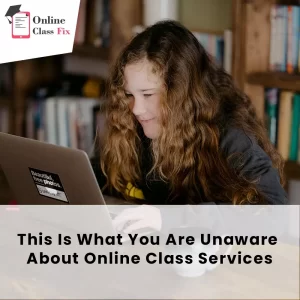8 Ways to Engage Students in Online Classes
Staying connected via webcam isn’t always engaging for students because it takes away their creativity.
In reality, online teaching needs you to use entirely different skill sets as compared to those used in the classroom.
With the atmosphere where a student feels at home, there are a lot of potential distractions, keeping the students motivated, interested, and engaged in their classes can be one of the biggest tasks that teachers had to face online.
The question most of us online teachers ask themselves at least once: How to make the online classes experience more engaging and interactive for the students?”
Luckily, there are a lot of tips to assist you that can increase your engagement in the classroom.
Let’s have a look.
Here are the top 8 suggestions for how to conduct enjoyable and interesting classes in an online classroom:
1. Utilize Technology for Your Benefit
While teaching online has its issues, it also gives you access to tons of pretty amazing tools.
You can make use of the technology you have, whether it be whiteboards, pointers, virtual games, text editors, drawing tools, file editors, breakout rooms, or screen-sharing tools, to spice up your classes and keep students on their toes.
In order for kids to feel comfortable utilizing these virtual tools, you must first be familiar with how to utilize them yourself.
Then consider how you may include them to make your lessons more engaging.
You could, for instance, utilize amusing rewards to motivate students.
One more amazing way to use technology is to get online class help from professional services.
If you want to hire online class help, get in touch with OnlineClassFix.
2. Look Your Best
Visual: If your students are going to look at you through a webcam, make sure to not only look presentable but where you’re living (especially the background) looks neat too. Keep your background simple to have minimum distractions.
And that’s just the beginning!
If students can see your face, showing them that you are interested in what they are saying will be 100 times more inspiring for them (even if this occasionally tests your saintly teacher’s patience!).
Your visual aids must also be in top shape.
Ensure that any movies you utilize are of high quality and that your slides are organized and clear.
Audio: Try to change the way you talk or learn a new way to introduce yourself. Keep a mixed tempo during your class!
Enhance your storytelling skills and show praises loudly. This can be a big difference maker in motivating your students.
And, again, always make sure that the audio that is reaching your students is of good quality.
Last but not least, and perhaps this goes without saying, make sure you can deliver your online classes from a location with a dependable internet connection.
A shaky connection that is continually cut off will make pupils lose interest faster than anything else.
3. Discover What Motivates Your Students
The good news is that finding out what motivates and inspires your online students to participate in class, just like in a traditional classroom, is the actual key to engaging them.
Use the same tools you use in a traditional classroom when teaching English online or as a classroom instructor who has gone virtual.
Play some music, or just get creative with the drawing tool, to increase the enjoyment!
Never be reluctant to experiment with your kids until you find what works for them.
If your students are not motivated enough, they’ll seek to take my online class service.
4. Maintain Interaction
Giving pupils some quiet reflection time to work alone or read a text in a face-to-face session is standard practice.
However, these kinds of exercises don’t work well in virtual classes.
It’s difficult to read lengthy, dense sentences on a screen; it’s much simpler to read shorter, more manageable passages.
Simply said, silence doesn’t work well in virtual classrooms because it gives students the perfect justification for diverting their attention.
The best approach is to design exercises that keep your pupils actively speaking, clicking, or typing during the entire class.
In order to accomplish this, ask plenty of questions, use games, and make sure students must physically perform tasks like utilizing sketching tools or typing in conversation boxes.
Additionally, you might organize your class so that your student must speak at least once every three minutes.
5. Set Objectives That Your Students Can Easily Stick With
Another best way to support your students in online classes is to help them stay on track with their studies is to setting achievable goals and observing their progress.
Setting Objectives For Online Students
Making sure each lesson includes a clear outline that you give to your students will help them understand where they are in the learning process and the context of any activities they are completing. This is a simple method to incorporate short-term goals into your online classroom.
Next, consider what incentives you may give students for completing assignments or, even better, for working hard during a session.
You may try rewarding good behavior with praise, badges, points, games, or other enjoyable learning activities that your pupils would enjoy.
Going too far into the future when setting long-term goals may not be successful, but try scheduling periodic meetings with your students to check in and establish goals for the upcoming month, three months, or six months.
For Online Students, Progress Evaluations
Build continuity between classes for short-term progress assessments by doing fast reviews or quizzes on prior material.
Building a portfolio of work with the pupils is a terrific method to help them remember their long-term progress since they can look back and see how far they’ve gone.
Starting an achievement page online is one way to accomplish this.
When educating children, you can go to the achievement page after each accomplishment and encourage them to sketch something that serves as a reminder of what they have learned (you might want to make it an achievement tree they can add to or a trophy shelf.) When teaching adults or teenagers, you might want to ask them to write as well.
6. Make The Lesson Consumable By Breaking It Down
Since timing is so important while teaching online, you might need to break up your lectures differently than you would in person.
Keep the conversation moving quickly and divide the information into manageable bits as a general rule.
Practically speaking, this means avoiding lengthy explanations and text-heavy slides!
Otherwise, students will get bored and start seeking to take my online class service
Another fantastic technique to help your students feel like the time goes by quickly in your sessions is to vary the pace by including a range of activity kinds.
Additionally, you can use free lesson planners like Plan board to create your lesson plans for the online classroom.
7. Regard Your Students With Patience
It doesn’t need to be said that it’s challenging to keep kids engaged and inspired. Remember that young kids may have limited attention spans, making it challenging for them to sit still and pay attention.
This is entirely appropriate and usual.
It’s important to be patient with them and to take breaks from time to time.
Your children can sense if you’re furious or frustrated when something doesn’t work. Absolutely normal and acceptable, this!
It’s crucial to be patient with them and to occasionally give them a break.
When something doesn’t click, your kids can tell if you’re angry or frustrated by it. And this only makes things worse.
Give them periodic brief rest periods. It will have an impact!
8. Make Your Pupils Feel Appreciated
The truth is that students who take classes online often feel very alone, which can significantly contribute to their lack of motivation.
If they are feeling fatigued, they may find it all too tempting to skip class because they believe no one would notice or care if they don’t show up.
Making their students feel appreciated in the classroom is the best method that online instructors can help to address this.
You ask, “How do I do that?”
Here are a few ideas:
- Learn each student’s name, use it frequently during the session, and make sure they are also familiar with your own.
- Continue what you started in earlier lessons so that your pupils may see that you are paying attention to what they are learning (and they should be too).
- Discover your students’ interests and, if possible, incorporate them into the lecture.
- Give your students regular comments on their efforts.
- Try to always be upbeat, supportive, and present.
Improve The Gamification Of The Online Classroom
Online education requires originality.
At first, mastering online surroundings can be difficult, but with a little time and work, your students will have the finest experience possible.
They’ll be eager to access your classroom as well.
We sincerely hope that these pointers have given you a solid foundation for creating better online classrooms, but if you still require a little more assistance, don’t be disheartened as OnlineClassFix is here to assist you.




